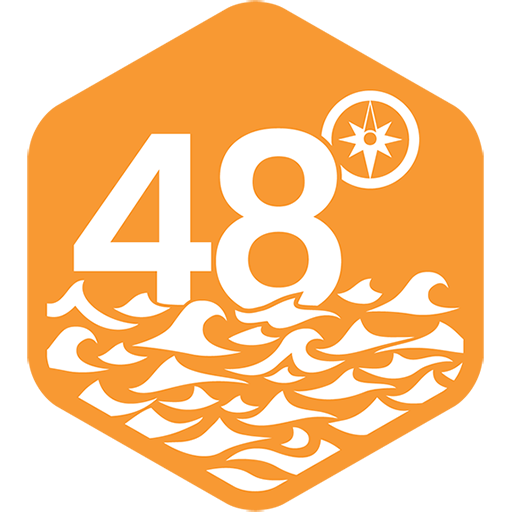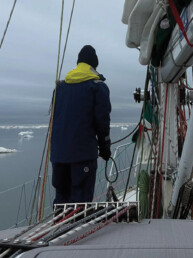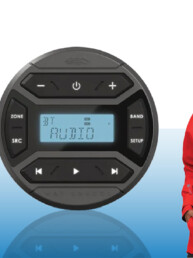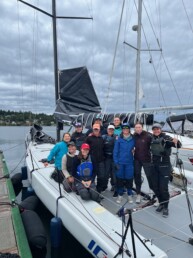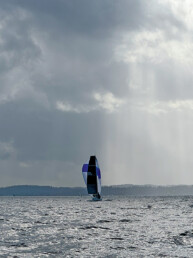Welcome to the first installment of Necessary or Nice, a new column where we tackle the age-old question for cruisers and sailors alike: Is a particular “thing” truly essential for cruising, or is it a nicety that makes life on the water a little sweeter?
If you’ve been cruising for any amount of time, you already know about the thin line between necessity and indulgence when it comes to boat gear. While it’s tempting to imagine having unlimited time and money to outfit your boat with the latest, greatest, and most innovative equipment, the reality of cruising requires a more practical approach for almost everybody. It’s all about prioritizing what you need versus what’s nice to have for an added touch of comfort or convenience.
Certainly, there’s room for varying perspectives in this realm, and this column will feature our informed opinions that may or may not align with yours. Still, we hope you’ll find our takes rooted in knowledge and experience.
Who are “we” behind these opinions? We’re Gio and Julie of Pelagic Blue, our sail training outfit through which we lead cruising expeditions far afield from our homeport in Anacortes, Washington. In 2021 we took a “seabattical” from our careers as fisheries biologists to go cruising, got hooked, and decided not to return to land life as we knew it. But before we set sail across the Pacific Ocean, we did something unconventional, we went back to school.
After reading countless stories of cruisers plagued by outrageous boat maintenance bills and nightmare refits, we realized that a solid education in all things boat could only help us. Nine months later, we graduated as 4.0 students and certified ABYC and NMEA marine technicians. We then spent a few years working in the industry and became capable of diagnosing and repairing just about everything on a modern cruising boat (which is major progress, because before that, Julie was convinced electricity was out to get her).
Shortly after graduation, we bought a 2002 Malö 39, Sea Fox, in San Diego. Strong, capable, and ready for bluewater cruising, we spent five months correcting her most critical deficiencies before setting sail for Mexico, Hawai’i, Alaska, and British Columbia. And the best part? We completely relished our first year of cruising. We had fun, learned a ton, and grew closer as co-captains—a far cry from the cruisers we met who were bogged down by endless maintenance problems, unbalanced crew training, missed weather windows, and over-budget refits.
Over 40,000 miles of sailing have taught us so much, including the fact that not all gear is created equal. The boating world is full of products that sound perfect in theory but may not hold up to the practical demands of life afloat. Likewise, there are those less glamorous yet incredibly useful tools and solutions that often go unnoticed but make all the difference when you’re braving the elements or tackling a challenging project. That’s where Necessary or Nice comes in. Each mariner will have specific needs and wants, but we hope and believe that opinions based on real life education and experience are valuable, even when their content may not be universal for all of our fellow boaters. In this column, we’ll share our honest, sometimes spicy, takes on various cruising boat systems and components. Our goal is to help you make informed decisions about what is truly essential or just nice to have as you gear up for your next cruising adventure.
So, without further ado… the first topic is: Full Cockpit Enclosures.
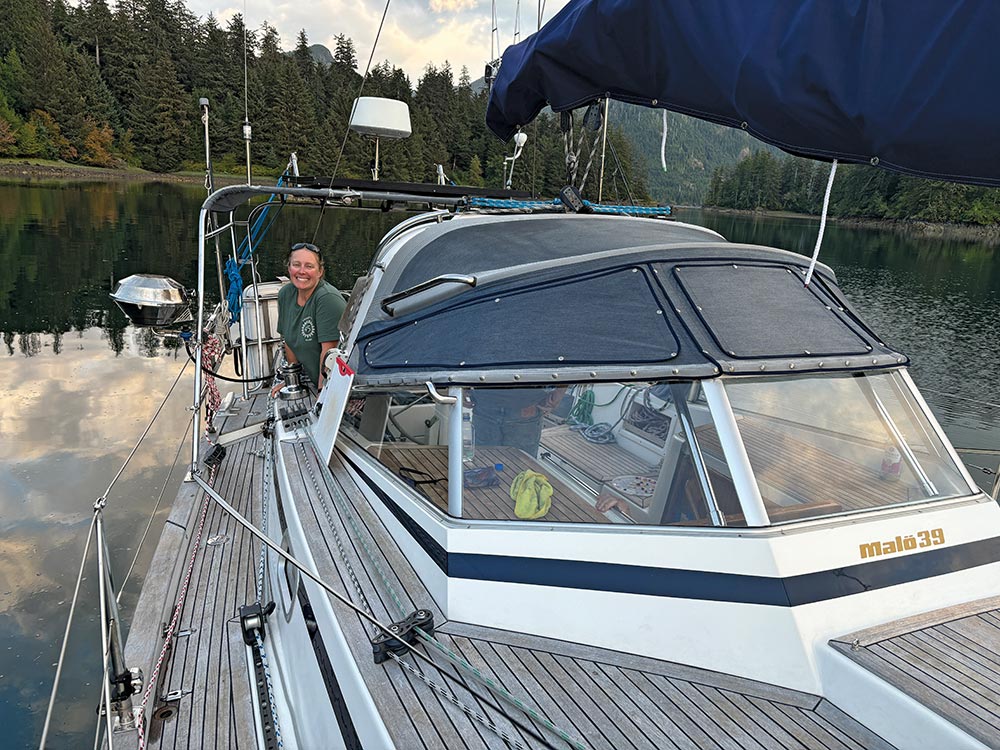
Is a Full Cockpit Enclosure Necessary or Just Nice?
For year-round Pacific Northwest cruisers, a full cockpit enclosure might be the best money you’ll ever spend on your boat. The benefits are clear, especially if you’re planning to venture into Southeast Alaska, where the state bird is widely recognized as the mosquito. A full cockpit enclosure provides an all-weather “back porch” for those with limited space below deck. And with a good heater, it creates a warm, dry outdoor living space to watch whales or wave to the neighbors—even in the harshest weather. It also provides an excellent opportunity to increase your solar capacity for off-grid adventures, with the added benefit that the canvas behind the boom is unlikely to be shaded.
Most enclosures feature multiple windows, typically made of acrylic, polycarbonate, or vinyl. Tuffak polycarbonate, used by top-tier canvas manufacturers, offers excellent visibility but comes with trade-offs: it’s more vulnerable to UV and physical damage and, like all premium products, it carries a higher price tag. Consistent with a premium cost is the need for a modular design to facilitate maximum versatility. Every design feature should be intentional and deliberate, and include removable protective covers to prolong the life of each window. One common challenge with removable panels is storage; haphazardly tossing them into a lazarette will lead to scratches in no time. If not properly protected, the marine plastics used for these windows can degrade over time, resulting in yellowing and reduced visibility. The best solution? Snap-on window covers, which a skilled designer can integrate into the enclosure to protect the windows when not in use, are a great feature. We use them aboard Sea Fox and couldn’t be happier with their performance. But don’t be lazy—we make sure to pull them out every time we anchor, even if we only expect to be there briefly. You never know what the weather will throw your way, or who might drop anchor next to you and encourage you to stay a little longer.
A recent client of ours shared a quote from a reputable marine canvas company for fully enclosing the cockpit of a 34-foot sailboat, including a new dodger. The total came in at over $18,000. Complicating the sense of “investment” with this expensive installation, enclosures do have a limited lifespan—which, of course, is always the case with boat gear. The durability of your marine canvas depends on both the material quality and how well you maintain it. With proper care, high-quality canvas can last 7 to 12 years. While a full enclosure might initially feel like a luxury, the long-term benefits—especially in terms of added living space, comfort, and utility—can make it a solid investment for those planning to spend extended time aboard, particularly in winter.
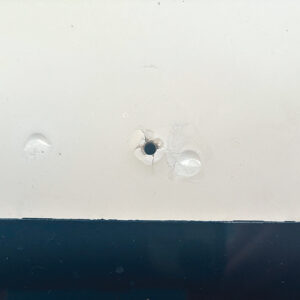
When evaluating your enclosure’s design, consider the configuration of your stern pulpit and any accessories attached to it. Items like your outboard, grill, stern tie reel, dinghy davits, or even a downrigger (if you’re a salmon fanatic) will need to be factored into the design. The enclosure will need to accommodate these accessories or be scaled down so it does not extend that far aft. Additionally, the canvas must be securely attached to the boat. While canvas anchors come in various shapes and sizes, they all require many small holes to be drilled into your boat’s hull (which, spoiler alert, we don’t love). Once drilled, it’s essential to seal the fasteners with a quality, non-permanent adhesive sealant to prevent water ingress.
While enclosures offer valuable protection from the elements, they come with trade-offs, particularly when it comes to sail handling and visibility. For some, staying dry and warm in tough conditions justifies the investment. But for others—especially those who prefer a traditional sailing experience or sail in milder weather—the added cost and potential complications may not be worth it. It all depends on your sailing style and whether you value shelter over the freedom to fully engage with the elements.
Let’s not forget, we are sailors, and part of that identity is our relationship with the floppy white things attached to our masts. It’s critical for safety that we maintain clear visibility of our sails while underway. This brings us to one of the biggest drawbacks of a full enclosure: staying connected to the outside world while sailing. When cruising the Salish Sea and west coast of Vancouver Island, we keep a vigilant bow watch at all times to look out for logs, debris, and other hazards, as well as for other vessels that may have limited visibility and might not see us. In high-traffic areas or during reduced visibility, we often assign two crew members to ensure full coverage. A full enclosure, by blocking visibility, can severely hinder this essential awareness and connection to the outside world.
A poorly designed or overly protective enclosure can severely limit visibility and functionality, making you feel like you’re stuck motoring rather than sailing. When fully enclosed, subtle wind shifts are harder to detect, and hearing a foghorn over the sound of rain becomes nearly impossible. A removable piece of canvas between the dodger and the bimini could help, allowing visibility while maintaining shelter. Alternatively, a clear panel in this connection piece would give the skipper a direct line of sight forward. Even better, a design that lets you enclose the cockpit at anchor while still allowing visibility of the sails when underway strikes the perfect balance of comfort and functionality.
Another major drawback of a full enclosure is that leaving the cockpit to go forward becomes much trickier. You’ll need to ensure the enclosure’s height accommodates the tallest crew member’s safe egress from the cockpit without interfering with boom positioning. Clearing hockled reef lines or checking boom sheeting position is a nonissue with an open slot between the dodger and bimini. If the design precludes safe access to the length of the boom, sorting out issues with lines, the mainsail, or attachment points could become hazardous.
Ultimately, whether a full enclosure is a necessity or a nicety depends on your cruising style, preferences, and priorities. For those who spend long hours underway or sailing in areas with frequent inclement weather, an enclosure can make a substantial difference in comfort and safety. But for occasional or fair-weather sailors, the trade-offs in sail handling and cockpit access might make it an unnecessary addition—better suited for those who value shelter over the traditional sailing experience. It’s a decision that will depend on how you plan to use your boat, how often you’re aboard, and how much you’re willing to spend. If your goal is maximum safety while sailing, we’d likely recommend against it in favor of fresh foulies.
When we have evaluated a full cockpit enclosure for our boat, the limited lifespan, combined with the significant cost, and the numerous holes required to anchor its components, are not worthwhile trade-offs. I’ve spent countless hours repairing gel coat holes on Sea Fox to keep water out—which is among our top maintenance priorities—and to restore her original beauty. As regular offshore passagemakers who also cruise the often-damp Pacific Northwest, we are particularly sensitive to water intrusion. Any installation that makes more holes automatically gives us pause.
Foregoing the full enclosure means our foul weather gear gets a workout, and we occasionally lament how wet the cockpit can get with the right wind and rain angle, but these conditions are temporary and easily remedied with a hot cup of tea underway and a safe passage to our anchorage.
From our vantage point, a full cockpit enclosure will likely mean you’ll sail your boat less; and we set out to make as many miles under sail as possible. The time and effort required to disassemble canvas panels or remove numerous window covers before getting underway will inevitably lead to frustration. You may even find yourself thinking, “Let’s just motor,” or worse, “It’s too much work; let’s stay here.” Luckily, there are solidly functional compromises with partial enclosures. For cruisers looking for a warm, comfortable space while motoring, a powerboat might be a better option, as they’re designed with that purpose in mind. For us, a full cockpit enclosure remains squarely on the Nice List.
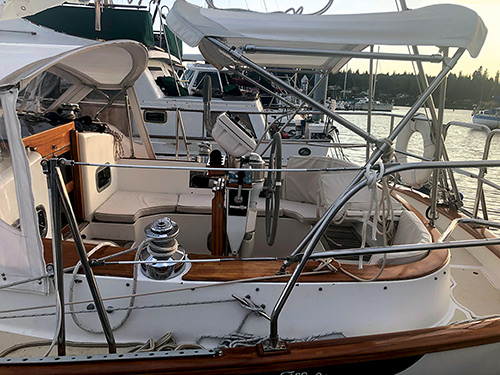
Gio and Julie of Pelagic Blue lead offshore sail training expeditions and teach cruising skills classes aimed at preparing aspiring cruisers for safe, self-sufficient cruising on their own boats.
